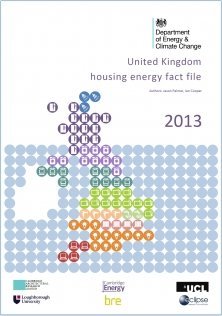
CAR Energy has unparalleled experience and understanding of energy and climate change.
We work at all scales – from international studies looking at energy use in different sectors, to detailed modelling and monitoring in individual buildings.
We work closely with the UK Government’s Department for Business, Energy and Industrial Strategy (formerly the Department of Energy and Climate Change), with the Devolved Assemblies, local authorities and others charged with implementing low carbon policies. We have particular strengths relating to energy use in housing and modelling. We have worked for building owners and clients as well as designers, developers and construction firms.
We have carried out research and development work supporting innovation projects, including a novel way to improve boiler efficiency in homes and non-domestic buildings, and examining new ways of insulating walls more effectively. We have also undertaken physical measurements, and combined this with complex modelling to answer difficult questions about how to reduce heat loss from buildings in a timeframe consistent with our ambitious national commitments to reduce carbon emissions from the built environment.
Our work encompasses not only energy efficiency and low carbon design (so-called ‘mitigation’ of climate change), but also questions linked to reducing the risks from a changing climate (known as ‘adaptation’). For example, ‘how can we cut the possible 5,800 extra premature deaths from hot summers in the UK by the 2050s?’ or ‘how can we contain a possible ten-fold increase in the cost of damage to property from flooding?’.

We work on individual technologies, whole buildings, portfolios of buildings, and even national studies on energy use and carbon emissions from buildings.
Services
Scientific measurements
CAR has a strong quantitative orientation and we have worked on taking measurements from individual buildings and groups of buildings since the company was formed 30 years ago. We are particularly interested in measuring energy and carbon performance in buildings, and unpicking what is now recognised as the ‘Performance Gap’ between estimated carbon performance at the design stage, and what happens when buildings are actually completed and handed over.
We have carried out a series of projects looking at the Performance Gap facing dwellings and non-domestic buildings, extending findings from Innovate UK’s £8 million Building Performance Evaluation Programme.
We also undertook a series of very detailed scientific measurements to evaluate heat loss through cavity party walls, on behalf of the Government’s Department of Business and Energy (BEIS). This work was ground-breaking, using new measurement and modelling techniques, and the first time a large sample of homes had undergone such measurements. Our findings challenged the accepted wisdom about heat loss through party walls.
We subsequently won financial support from BEIS’s Innovation Funding to examine the potential energy and carbon saving from using an innovative boiler add-on called Oxypod. This has been shown to remove air and oxygen from heating circuits, and the developers claimed it also brings significant energy and carbon savings. We are using scientific measurements to assemble real-world performance data and assess whether there is truly an energy and carbon benefit.
We have also used smart-meter data and temperature sensors to estimate heat-loss coefficients (which provide a summary snapshot of thermal performance of buildings) for 50+ dwellings.
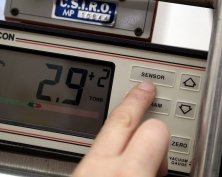
Energy modelling
Excellent design is based on good science as well as a feeling for appearance and a sense of place. CAR has developed scientific models showing how individual buildings or groups of buildings affect – and are affected by – the environment. They are used by developers, designers and policy makers to inform their decisions.
ScotCODE: Modelling cost-effective decarbonised heating for Scotland
WWF-Scotland asked us to build a model to explore how to deploy far greater numbers of decarbonised heating systems, together with energy-efficiency improvements, north of the border. We found that with only modest, low-cost energy efficiency measures, most Scottish households could convert to using heat pumps and see lower overall running costs than they have now. Our recommendation to the Scottish Government was to prioritise dwellings using oil-fired heating, and older homes with solid walls first, then gas-heated homes and bungalows, and finally newer dwellings built since 1982 and flats, where the potential savings are lower. This sequence is most cost effective, better for reducing emissions quickly, and for helping to tackle fuel poverty.
CODE: Cost Optimal Domestic Electrification
We built this model to help the Government work out the most cost-effective ways to convert UK homes from high-carbon gas and oil heating to low-carbon electric heating, primarily using heat pumps. The model incorporates sophisticated dynamic simulation, with hourly calculations, for 12 archetype dwellings that are representative of UK homes. It also runs optimisation to identify the most cost-effective combinations of insulation and airtightness measures, installed alongside electric heating, for each of the dwelling types.
Cambridge Housing Model
This model was developed by Cambridge Architectural Research for BEIS to underpin the Housing Energy Fact File and Energy Consumption in the UK, and to inform housing policy decisions. It was published to encourage scrutiny of the model, and in line with Government policies on transparency. The model is still being developed, and we welcome feedback and comments about it. The model uses English Housing Survey data, coupled to a SAP-based energy calculator, to estimate energy use and CO2 emissions for all homes in England, broken down by final use. The Model and User Guide are available on Hightail.
The Government’s 2100 Calculator
CAR built on the work we did for the Government’s 2050 Calculator, estimating energy use and carbon emissions through to 2050, by helping to develop a new 2100 Calculator that estimates emissions to the end of the century. This has 45 different policy levers (different ways policy makers can intervene to reduce energy use and emissions), at different intensities, from “business as usual” (Level 1) to “effort equivalent to the Apollo landings” (Level 4). The new Calculator has dull and familiar interventions – like more insulation on buildings, increased uptake of heat pumps, more solar power, and more wind turbines – but also more innovative interventions – like large-scale wave and tidal energy, using heat networks, biomass power with carbon-capture and storage and ‘greenhouse gas removal’. All of the interventions and their impacts are based on the best available scientific evidence.
Embodied energy
The sustainability of a building over its lifetime depends not only on its energy consumption in use – and hence CO2 output – but also the embodied energy in its construction it contains. This is the energy consumed in the production of the building materials and components, the process of construction itself, and the renewal of various elements during its life. Our knowledge of embodied energy and durability for various building elements from many countries throughout the world enables us, for example, to identify best practice, advise on minimising a building’s CO2 footprint, and calculate energy trade-offs over its lifetime. We devised a new method to ensure the highest quality of data is incorporated in embodied energy calculations for three European countries, and have even applied this expertise to bamboo composite materials.
Daylight and sunlight analysis
CAR offers analysis of daylight and sunlight, both within buildings and for the urban spaces that surround them. We have applied image processing techniques to digital elevation models of the urban tissue in order to study daylight and sunlight availability in the urban environment.
Environmental Impact Assessment
Using the same tools that support good design, CAR can prepare impact assessments for planning applications covering sustainability, daylight and renewable energy.

New Global Calculator

Structural Bamboo Composites
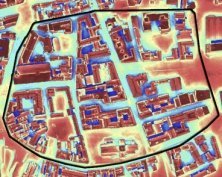
Daylight and sunlight analysis
Low-carbon technologies
There is enormous pressure on developers and public sector clients to cut the carbon impact of new buildings. The same pressure is mounting for small carbon footprints from refurbishment projects, and this pressure is unlikely to go away.
However, once you have covered the basics like insulation, airtightness and efficient heating, lights and ventilation, it is hard to make further savings in CO2. There are hundreds of manufacturers only too happy to take your money for their equipment, but how can you be sure you are investing wisely, and how do you know if you can believe their claims for CO2 savings?
There are dozens of options for low carbon technologies, each with their own set of risks and benefits:
- photovoltaics
- solar water heaters
- ground-source heat pumps
- wind turbines
- biomass heaters
- combined heat and power.
However, not all are mature technologies, and many do not deliver the CO2benefits claimed. CAR can help you sort the wheat from the chaff, and make informed decisions about which low carbon technologies to use.
CAR worked with BRE and others on ‘Climate Lite’ – a computerised tool allowing designers to model CO2 emissions at an early stage, and then work out the best way to meet planning requirements from renewables.
We have also carried out long-term monitoring and analysis of PV systems, installed heat pumps, wind turbines, and heating controls

Thermal stoge and insulation
Building performance evaluation
The construction industry and design professions focus their attention on the building process, but for building users the story starts when construction ends. The real success or otherwise of a building depends on how effectively it meets its users’ needs and aspirations.
Building owners often need to evaluate how well their buildings are performing, for example, to prioritise investment in improvements, to enhance occupant satisfaction or productivity, to decide whether to demolish or refurbish, and so on.
The government and landowners may also wish to evaluate the overall impact on land use of changing patterns of energy use, generation and distribution.
With its multi-disciplinary expertise, CAR offers a powerful array of techniques, including Post-occupancy Surveys and Building Performance Reviews, for evaluating buildings in use, covering the following aspects of performance:
- user satisfaction
- operational efficiency and utilisation
- renewable energy and heating
- environmental conditions – heat/ventilation, light, sound
- sustainability – energy, emissions, pollution
- condition and structural integrity
CAR’s evaluation projects are configured to suit clients’ specific needs, in terms of the scale of the study, scope of topics covered, method of data collection, type of data analysis, and reporting of findings.
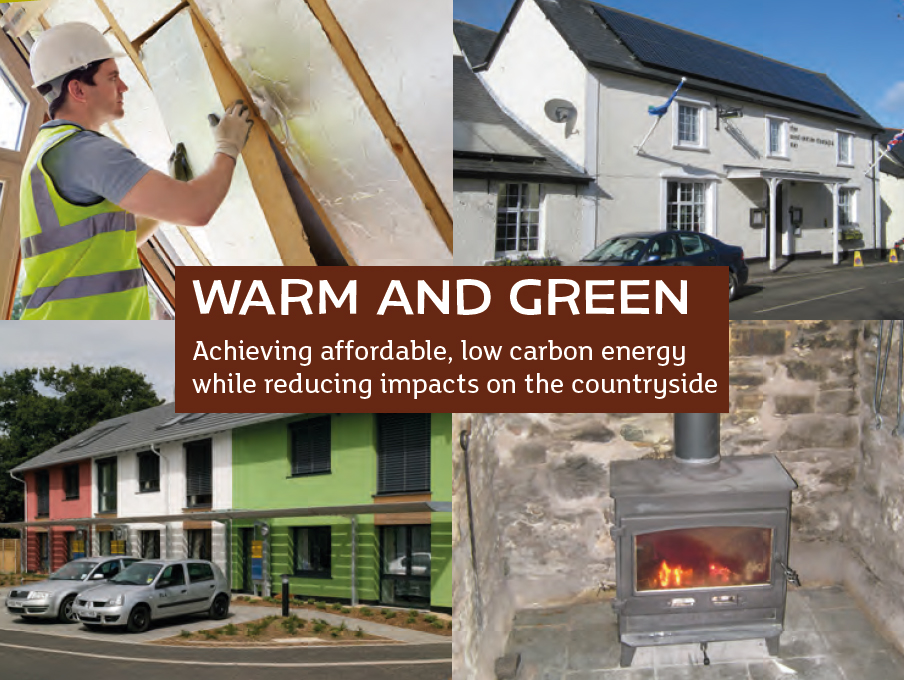
Sustanaible Energy in the Countryside
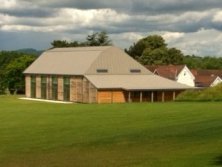
King´s Hawford School
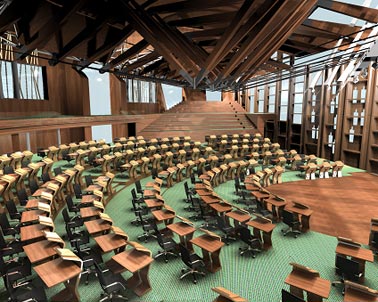
Post-occupancy evaluation
Cambridge Non-Domestic Model
The Cambridge Non-Domestic Model allows you to explore the effect of upgrading different numbers of buildings on energy use and carbon dioxide. Non-domestic buildings have long been neglected in energy modelling in favour of housing – partly because the diversity of non-domestic buildings makes them harder to model, and partly because there is much less reliable data available describing non-domestic buildings.
However, non-domestic buildings currently account for around a tenth of total carbon emissions. Part of these emissions come from so-called ‘regulated’ energy uses (like heating, lighting and air conditioning), while the rest comes from ‘unregulated’ energy uses (like catering, lifts, computers and other appliances).
Our model addresses both. It also includes the effect of new buildings being added to the stock, and old buildings being demolished. It suggests that – if we pulled out all the stops and worked really hard on non-domestic buildings – the UK could save 45 TWh of energy by insulating all of these buildings by 2022, or just under 25% of energy use in this sector. Or, if we both insulate all these buildings and upgrade their lighting to modern, energy efficient lights, we could save 72 TWh (38%).
The model allows you to change assumptions about the carbon intensity of electricity over time, and demolitions and new building. It also shows the regional impact of different upgrade paths, year-by-year to 2022.
You can read our report on the model below.
And download a working version of the model (a 30Mb file) here.
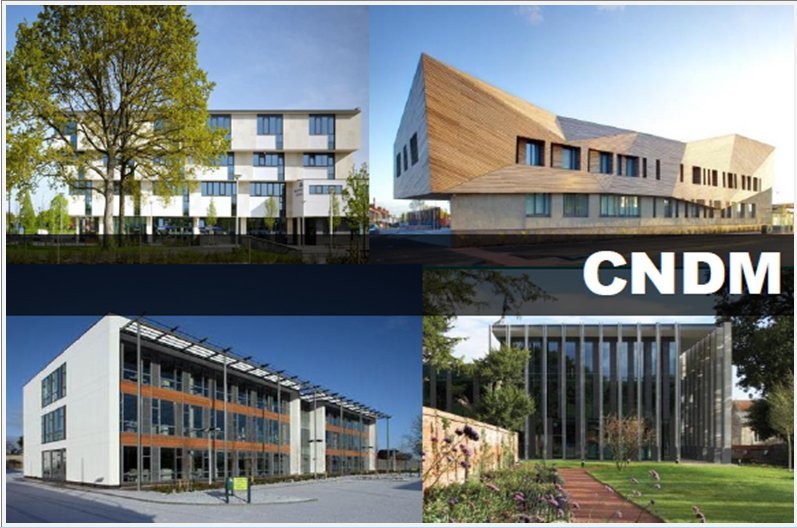
Energy certificates
Energy certificates have been compulsory since 2008 for all large buildings sold or rented in the UK and public buildings. Now all homes and commercial properties that are sold or rented need EPCs.
This is a major plank in the Government’s drive to reduce carbon emissions from buildings. The certificates send a clear message to prospective purchasers and leaseholders about how efficient their buildings are. The certificates provide information about gas and electricity costs, annual energy demand, how well the buildings have been managed for energy use, and how much CO2 they generate. Critically, the certificates offer recommendations for how to reduce energy use and CO2 – although these recommendations are often generic and not terribly useful.
At last, there is an incentive for building owners who do not pay for their tenants’ energy use to address energy efficiency. In theory, buildings with good energy performance attract a premium, while inefficient buildings are penalised in the marketplace.
CAR has carried out energy analysis and certification work in the UK and overseas. If you are interested in the research possibilities of EPCs, CAR can help.
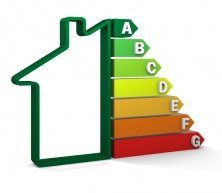
Sustainable construction
Sustainable construction is not only about energy. Materials, transport, water use and rainwater collection are ever more important. Sustainable construction presents a series of challenges. Its breadth, the inter-related issues it includes, and the ever-changing legislative pressures for more sustainable buildings make it a minefield even for experienced designers and developers.
The defunct Code for Sustainable Homes and BREEAM added impetus to calls for greater sustainability in new buildings, and Building Regulations and planning requirements are converging with these broader sustainability standards – especially in Scotland. Non-domestic buildings and existing buildings look set to face similar pressure to meet and show they are meeting sustainability goals.
Energy and climate change usually carry most weight in sustainable construction, but also important are:
- Water use
- Travel and transport
- Green space and landscaping
- Waste and recycling
- Providing a healthy internal environment
- Whole life costs and investment appraisal
- Low impact materials
- Improving historic/listed buildings, and
- Providing facilities for local people.
CAR can offer support to clients and designers across all of these issues.
Projects
Somerville College Dining Hall Client: Somerville College Oxford. We carried out analysis to improve natural ventilation while optimising thermal performance, together with acoustic and lighting improvements.
Renewable Energy Statements Clients: Various. We prepared Renewable Energy Statements for volume and small scale house-builders – looking for cost-effective ways to achieve renewables targets.
Huntingdon Olympic Gym Client: Huntingdon Gymnastics Club. We prepared resource use and energy options for the transformation of this athletics facility in Cambridgeshire.
Exhibition and Archive Centre, Kuwait Client: Malcolm Reading Associates. We analysed options for Renewable Energy and international accreditation systems for this project in the Gulf.
Sustainable Schools Client: Department for Education and Skills. CAR analysed and wrote case studies of 10 leading edge ‘sustainable ’ schools. See pdf below.
Encouraging Behaviour Change
Effective engagement with building users is a key not only to good design of environmental control system interfaces, but also encourages pro-environmental behaviours.
For example, building control devices that give feedback to users enable them to take ownership of the information provided, and act on it to run their homes in a comfortable yet economical way.
CAR provides consultancy on techniques of user engagement, and input to the design of controls.
User engagement
We have pioneered a number of techniques for engaging building users, using questionnaire techniques to frame the important issues to be investigated. We find that workshops then play an important part in encouraging users to explore their own attitudes to sustainability using simple self-diagnostic tools. We believe that this diagnosis can be useful in customising information provided to the building users, for maximum benefit.
Design of controls
We aim to enhance usability of controls and support behaviour change to improve energy. The visual appeal of controls is very important: they need to present information in a clear and transparent manner, and be flexible in siting for maximum visibility. Customisation to suit the varying concerns of users – financial, environmental, informational and technological – is relevant, and also their specific styles of engagement, which may be gender and age specific. See pdf ‘Incorporating user behaviour preferences in the design of controls’ below.
Projects
Tenant engagement, Aragon Housing Association (2010-14)
Our role was in the design and implementation of a tenant consultation strategy to feed in to the design of controls. We carried out detailed interviews with a small sample of Aragon tenants, selected to represent a range of household composition and age of tenants. This was followed up with a workshop for a tenant group which further explored what mechanisms for behavioural changes might be effective. Notional designs for a control interface were also tested on the group. Research findings were incorporated in the design of control systems and interfaces for the scheme (implemented by controls engineers). They are designed to provide essential information in an uncluttered layout, assist decision making, and enable time-series data to be accessed easily.
Tenant engagement, Flagship Housing Association
A central aim of this scheme was again to enhance usability of the controls and support behaviour change to improve energy saving. We assessed potential upgrading measures for applicability and cost effectiveness, liaised with tenants and provided input to detailed design.
DEMULOG, EU Directorate XII (2000-04)
The DEMULOG project, carried out with partner organisations in France, Belgium and Finland, addressed the design of energy efficient housing for low-income groups. Social housing providers were involved throughout in briefing, specification and project planning. The design and analysis phases of the project were preceded by an extensive consultation exercise with families from the target income range.
Papworth Trust
We worked with the Papworth Trust to evaluate a retrofit scheme in Cambridge, using environmental monitoring and occupant engagement studies. The scheme, by SEarch architects, was designed to provide a low energy, supportive environment for adults with learning disabilities.
King’s Hawford School
We worked with building materials manufacturer St. Gobain on the monitoring and evaluation of the Bartholomew Barn that forms part of the King’s Hawford School near Worcester. Our brief was to monitor the environmental performance of the Barn, over the first two years of occupation. At the same time, CAR worked with the building’s users to collect information on their subjective experience of it.
Incorporating user behaviour preferences in the design of controls.pdf
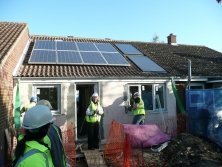
CAR worked with Aragon Housing Association and SDC on this retrofit project. User engagement to encourage behavioural change was an essential element of the scheme, which aims to save 80% of energy use.

CAR worked with Papworth Trust to evaluate a scheme by SEarch architects using environmental monitoring and occupant studies.

CAR monitored the environmental performance and evaluated the users’ experience of Bartholomew Barn, King’s Hawford School.
Adaptation in the UK
The UK Government highlights the importance of adaptation alongside the reduction of emissions. Even the most optimistic predictions suggest at least a 1.8 degree C rise in temperature by the end of the century. The UK Climate Impacts Programme (UKCIP) suggests the climate is likely to continue to become warmer, with an expected increase of 1.4 degrees C by 2080.
As well as higher temperatures, the latest UK projections show wetter winters, drier summers, more days of heavy rainfall and rising sea levels. These changes all pose significant challenges to the built environment, and CAR is working to further the research in this area. CAR also works on adaptation to abrupt change caused by earthquakes, volcanos and other natural disasters and has expertise in risk mitigation.
This work informs research into adaptation strategies closer to home. CAR sponsored research into the vulnerability of the housing stock in Great Britain in collaboration with the Energy Institute and the Centre for Urban Sustainability and Resilience at University College London. Using data from the English Housing Survey, this work aimed to assess the housing stock’s resilience to rising temperatures, floods, and extreme weather events. We explored effective and affordable adaptation strategies to ensure buildings withstand a changing climate. A publication from this project can be downloaded here.
We can help you assess how your buildings could be affected by climate change, and develop evidence-based strategies for making buildings more resilient. Alternatively, CAR’s modelling skills can be applied to work on regional and national adaptation strategies.

Installing a door guard is a simple way to reduce flood damage.
UK Housing Energy Fact File
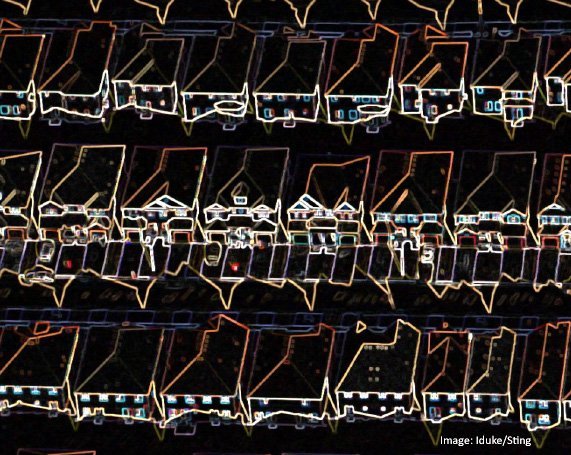
CAR wrote the UK Housing Energy Fact File for the Government’s Department of Energy & Climate Change (now Department for Business, Energy and Industrial Strategy). This replaced the Domestic Energy Fact File, commonly known as the bible for housing energy data.
We extended and revised the Fact File through three editions. The 2013 Fact File covered the period from 1970 to 2012, and it drew together all of the important data about energy use in homes in the UK. It was intended for policy-makers, researchers, and interested members of the public, and considered the relationship between domestic energy use and carbon dioxide emissions.
The energy we use in homes accounts for more than a quarter of UK energy use. CO2 emissions from housing are down by 25% compared to 1970, but if we are to meet the Government target for cutting greenhouse gas emissions by four-fifths by 2050, we have to think carefully about how we use energy in our homes.
Our modelling work showed that the average temperature of homes in winter has increased by 4 degrees since 1970. This is an average in time (day and night/occupied and unoccupied) and space (most households now heat most rooms, whereas they typically only the living room in 1970). Some homes have witnessed a bigger jump, while some poorer households are scarcely any warmer than they were.
The average increase in winter temperatures has come at the expense of greater energy use, and we now use a third more energy for heating than in 1970. However, far more efficient heating systems, married to better insulation for most homes, offset what would have been a much bigger hike in energy use.
The remarkable finding from the Fact File was that in spite of a vast increase in energy services in homes (microwaves, dishwashers, freezers, mobile phones and computers), CO2 emissions per household fell by almost half over four decades: from 9.6 tonnes per household to 5.0. (Emissions have continued to fall since.) We used time series data generated with CAR’s Cambridge Housing Model to produce a breakdown of energy use for different purposes. The Cambridge Housing Model is closely linked to SAP 2012 and SAP 10, and it has been published for others to use.
Links to the 2011, 2012 and 2013 Housing Energy Fact Files, and Excel versions of the tables and plots included, are provided on the right. Other CAR work for DECC is available on our Household Energy Use page.
Household Electricity Use
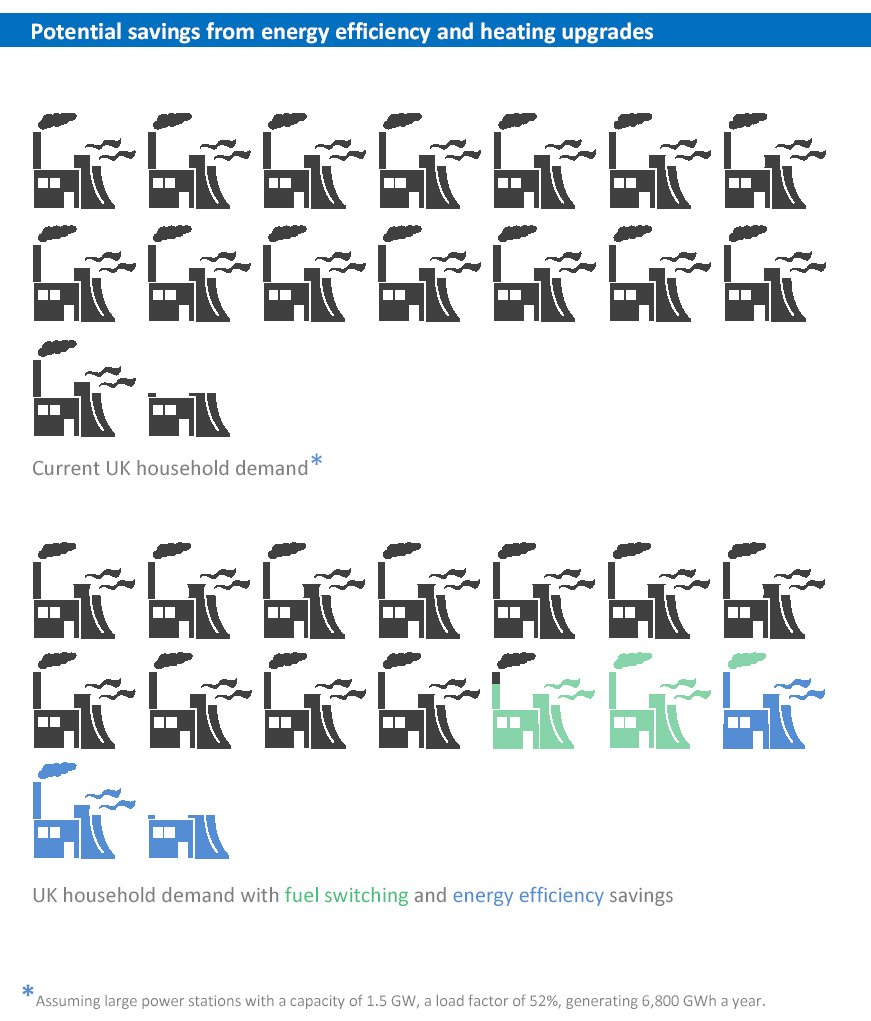
CAR analysed data from the largest survey of household electricity use ever carried out in the UK. We helped the Government Departments BEIS and DEFRA to understand the data so we can bring in policies to keep the country’s lights on.
The Household Electricity Use Survey was the most detailed monitoring of electricity use in the home ever undertaken in the UK. The data offered an unparalleled source of two-minute electricity profiles for households and individual appliances.
Working with Element Energy and Loughborough University, we examined the scope for demand shifting, baseload electricity demand, changes in the size and efficiency of appliances, and how different socio-economic groups and ages use electricity. We also mined the data to help draft the National Monitoring Strategy using smart meters.
How the highest and lowest social classes use most electricity
We found that households in the highest and lowest social classes – the wealthiest and the poorest – use more electricity than any other type of household. While the upper classes tend to leave more lights on at night, the lower social classes tend to leave the TV on for longer – even when they are not actually watching it.
Our summary report, ‘Powering the Nation 2’, brought together the main findings from six separate reports we wrote for the Departments over 18 months. We found that upper and middle classes are most likely to leave lights on overnight. Social classes A, B, C1 leave lights and appliances on in empty rooms for more than one hour a day, wasting 62 to 250 kWh/year per home each year. Across the population as a whole, nearly one in three of us leave lights on overnight and many more leave TVs, computers and lights unnecessarily on during the day and at peak periods.
CAR also found that households from lower social grades were more likely to watch TV for longer, and have the TV on in the background while performing other tasks. New TVs with programmable auto-off periods (which switch off when there is no interaction with the remote control) could bring significant savings here.
Our work revealed a surprising number of homes with very high electricity use for fridges and freezers, and particularly households with old freezers (15 years old or more). There was evidence suggesting around a fifth of old freezers are faulty, with the thermostat not cycling on and off as normal. These freezers consumed 330 kWh a year more than they should – more than double the usual energy consumption, at a cost of £43 a year more than usual.
You can see our reports on the Government’s website here.
Or download them directly below.
Our reports made it onto the front page of the Telegraph, and were also reported in other parts of the national press, here and here. The press coverage sparked further debate in Carbon Brief.
We also developed a tool for people to generate 24-hour profiles of different household types.

DECC publishes Costing Monitoring Equipment Report

DEMScot: Scotland´s Domestic Energy Model
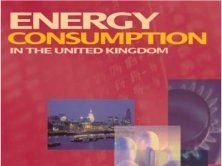
Household electricity survey
Powering the Nation 2_Electricity use in homes, and how to reduce it.pdf
Report 1_Early findings – demand side management.pdf
Report 2_Electrical appliances at home – tuning in to energy saving.pdf
Report 3_Models, labels and unusual appliances.pdf
Report 4_Savings, beliefs and demographic change.pdf
Report 6_The potential for Smart Meters in a National Household Survey.pdf
Energy Efficiency Legal Database (2021-Ongoing)
CODE Energy Model (2020-21)
Costs of upgrading new homes beyond Building Regs (2018)
Scientific Tests of a Device to Improve Boiler Efficiency, for BEIS (2018-20)
Detailed physical measurements before and after installing Oxypod, an innovative boiler upgrade that removes air from the heating circuit and may improve energy efficiency.
Extra Costs of Sustainable Homes, for Oxford City Council (2018)
Detailed bottom-up costing of different energy upgrades to homes in Oxford, to assist in viability questions linked to raising the standard of homes in planning requirements.
How Much to go Beyond Part L? for SHAP (2018)
Energy and carbon modelling and cost modelling, to find out the extra-over costs of exceeding the requirements for energy and carbon emissions in the Building Regulations.
Data Sourcing, Quality Assurance and Calibrating the 2100 Calculator, for BEIS (2018)
Helping BEIS to build an updated and extended version of the 2050 Calculator, which will model carbon emissions through to 2100, as a memorial to Sir David Mackay.
Pathways for Integrated Electric Heating, for the Energy Systems Catapult (2017-18)
Analysing different upgrade pathways for real homes in different circumstances, aimed at improving thermal efficiency and allowing a switch to electric heating.
Best practice and innovation for internal wall insulation, for BEIS (2017)
Assessing the thermal performance, costs, benefits and drawbacks of a series of innovative techniques for internal wall insulation, and crystalising current Best Practice IWI.
Heat Loss from Party Walls, for BEIS (2016-18)
Detailed physical measurements and thermal modelling of heat loss from 54 dwellings with party walls, to find out whether interventions are justified nationally.
Post-Occupancy Evaluation for Berkeley Homes (2016-17)
Interviewing and surveying new homeowners on Berkeley’s large site in Kidbrooke Village, Greenwich, to assess thermal comfort and occupant satisfaction.
Energy Signatures, for Ricardo AEA and BEIS (2016)
Providing housing stock data and modelling, and analysing mapping data, to target homes and households with most potential and need for energy efficiency measures.
‘What Works’ in Energy Bills, for BEIS (2016)
Exploring how to rework the information presented in energy bills in ways that are more meaningful for householders, and allow them to make informed decisions about energy.
BEIS cost assumptions for housing upgrades (2015-2016)
Interviewing installers, contractors, local authorities and energy companies to evaluate the true cost of 18 different retrofit measures that save energy in homes.
Smart homes and saving energy (2015)
Helping Loughborough University, the University of East Anglia and the University of Strathclyde write the Final Report from the three-year REFIT project (Retrofit Decision Support Tools for UK Homes using Smart Home Technology.
Specifying monitoring equipment for a national energy survey (2014-2015)
Assembling different packages of monitoring equipment that could be used in a large-scale, longitudinal energy study, collecting data about up to 10,000 homes, on behalf of the UK Government.
CPRE energy modelling and analysis (2014-2015)
Evaluating different energy scenarios, including demand and supply-side measures, to meet national carbon reduction targets.
Expert Panel Meeting on smart meters and home energy use (2013)
Setting up an expert panel meeting for BEIS to explore how we can put smart meter data to work and learn more about household appliance use.
Analysing the Household Electricity Survey for BEIS (2012-2015)
Carrying out further analysis of the most comprehensive survey of electricity use in homes ever undertaken in the UK, for the Department of Energy and Climate Change.
Estimating savings from low-energy behaviours (2012)
Modelling and calculations to estimate how much energy UK households could save by adopting 45 different behaviours, for the Department of Energy and Climate Change.
Researching energy storage and insulation materials (2012)
Writing a state-of-the-art review and running an event about energy storage and insulation materials, for the Department for Communities and Local Government.
Energy modelling, analysis and writing reports for BEIS (2010-2014)
Writing the UK Housing Energy Fact File, developing a model, and preparing national statistics for the UK Government’s Department of Energy and Climate Change.
Developing a model of Scotland’s Household Energy Use (2009-2010)
Designing and developing DEMScot – CAR and CE’s model of CO2 emissions from Scottish housing – for the Scottish Government, and exploring how to meet CO2 reduction targets.
Promoting and organising low-carbon business network (2008-2011)
Marketing and running the Cambridge Climate Change Charter for Cambridge City Council and South Cambs District Council.
Writing guidance on low energy school design (2008)
Helping to write a guide for school heads and bursars, published by the National College for School Leadership.
Developing software for assessing CO2 emissions from buildings – Climate Lite (2007-2010)
Designing and building a tool to predict energy demand and CO2 emissions for new buildings.
Providing design advice on sustainable buildings (2006-7)
Advising Granta Architects about low energy design, sustainable construction, water use and materials.
Writing case studies of sustainable schools (2005-7)
Writing ‘Sustainable Schools: Case studies’, including detailed energy analyses, for the Department for Education.
Publishing findings and analysis of results from the large-scale PV field trial (2003-7)
Coordinating and delivering dissemination activities for the DTI (now BIS).
Red Kite Housing Association
NESTA, the Innovation Agency for Social Good
The Energy Systems Catapult
The Sustainable Housing Action Partnership
The National Energy Foundation
National House-Building Council
Department for Business, Energy and Industrial Strategy
Department of Energy and Climate Change
Department for Environment, Food and Rural Affairs
The Scottish Government
The Technology Strategy Board (Innovate UK)
Department for Communities and Local Government
Department for Business, Innovation and Skills
Department for Education
Cambridge City Council
South Cambridgeshire District Council
Oxford City Council
Campaign to Protect Rural England
Committee on Climate Change
Utilita
Zero Waste Scotland
WWF Scotland
Berkeley Homes
VELUX
Ricardo Energy
Looking Critically at Heat Loss through Party Walls
Cost-Optimal Domestic Electrification: CODE
Monitoring The Effect Of Gas Boiler Efficiency
Modifiers In Field Trials
ISSN: 2458-9403 Vol. 7 Issue 1, January – 2020

